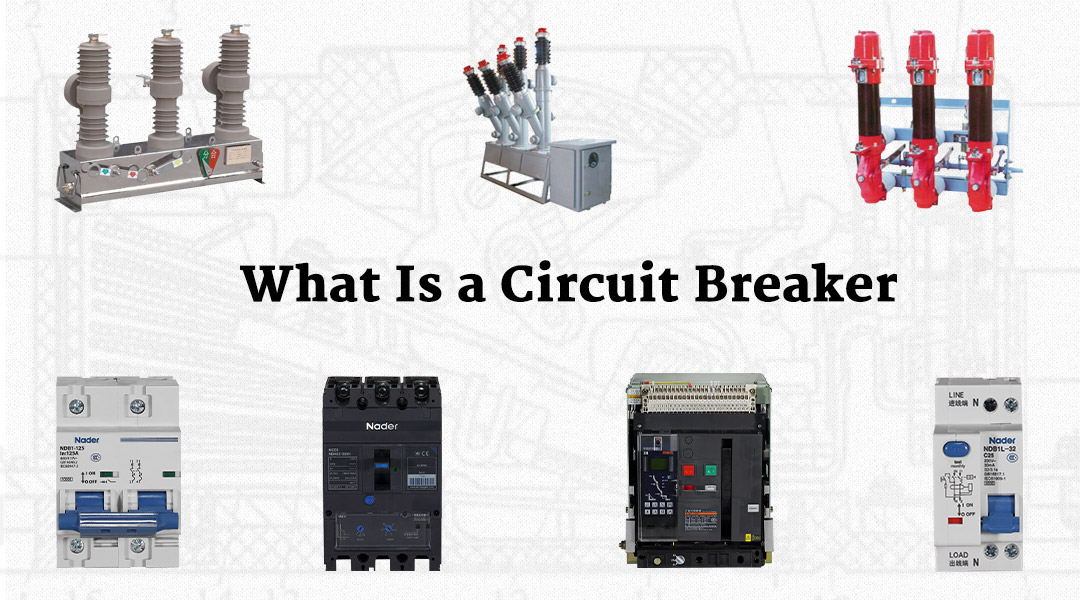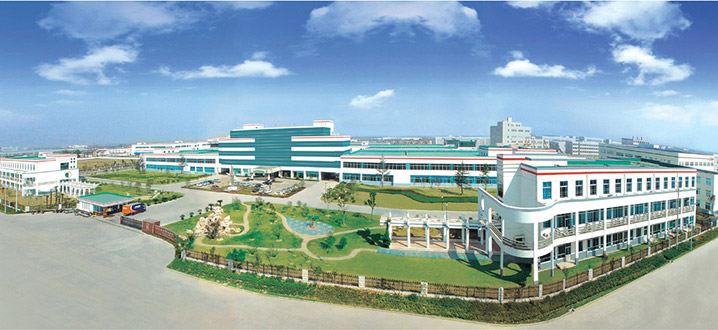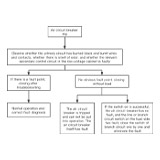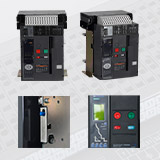
Circuit breaker refers to a switching device that can close, carry and break current under normal circuit conditions and can close, carry and break current under abnormal circuit conditions within a specified time. Circuit breakers are divided into high-voltage circuit breakers and low-voltage circuit breakers according to their scope of use. The division of high and low voltage is relatively fuzzy. Generally, those above 3kV are called high-voltage electrical appliances.
Circuit breakers can be used to distribute electric energy, start asynchronous motors infrequently, protect power lines and motors, etc., and automatically cut off the circuit when they experience serious overload, short circuit, or undervoltage faults. Its function is equivalent to a fuse switch Combination with overheating and underheating relays, etc. Moreover, it is generally not necessary to change parts after breaking the fault current. At present, it has been widely used.
It is worth mentioning that power distribution is an extremely important link in the generation, transmission and use of electricity. The power distribution system includes transformers and various high- and low-voltage electrical equipment, and low-voltage circuit breakers are widely used electrical appliances.

Working Principle of Circuit Breaker
Circuit breakers are generally composed of contact system, arc extinguishing system, operating mechanism, trip unit, shell and so on.
When a short circuit occurs, the magnetic field generated by the large current (generally 10 to 12 times) overcomes the reaction force spring, the trip unit pulls the operating mechanism, and the switch instantaneously trips. When overloaded, the current becomes larger, the heat generation increases, and the bimetal deforms to a certain extent to push the mechanism to move (the larger the current, the shorter the action time).

The function of the circuit breaker is to cut off and connect the load circuit, as well as cut off the fault circuit, to prevent the expansion of the accident and ensure safe operation. The high-voltage circuit breaker needs to break the 1500V arc with a current of 1500-2000A. These arcs can be stretched to 2m and still continue to burn without being extinguished. Therefore, arc extinguishing is a problem that must be solved by high-voltage circuit breakers.
The principle of arc extinguishing is mainly to cool the arc to weaken the thermal dissociation. On the other hand, to lengthen the arc by blowing the arc to strengthen the recombination and diffusion of charged particles, while blowing the charged particles in the arc gap to quickly restore the dielectric strength of the medium.
The Main Characteristics of the Circuit Breaker
The characteristics of the circuit breaker mainly include: rated voltage Ue; rated current In; setting range of tripping current for overload protection (Ir or Irth) and short circuit protection (Im); rated short-circuit breaking current (industrial circuit breaker Icu; household circuit breaker Icn), etc. These characteristics are generally indicated in detail in the product data sheet.

1. Rated working voltage (Ue): This is the voltage at which the circuit breaker works under normal (uninterrupted) conditions.
2. Rated current (In): This is the maximum current value that a circuit breaker equipped with a special over-current trip relay can withstand indefinitely under the ambient temperature specified by the manufacturer, and will not exceed the temperature limit specified by the current-bearing component .
3. Short-circuit relay trip current setting value (Im): Short-circuit trip relay (instantaneous or short delay) is used to quickly trip the circuit breaker when a high fault current value appears, and its trip limit Im.
4. Rated short-circuit breaking capacity (Icu or Icn): The rated short-circuit breaking current of the circuit breaker is the highest (expected) current value that the circuit breaker can break without being damaged. The current value provided in the standard is the root mean square value of the AC component of the fault current. When calculating the standard value, the DC transient component (always appearing in the worst-case short circuit) is assumed to be zero. Industrial circuit breaker ratings (Icu) and household circuit breaker ratings (Icn) are usually given in the form of kA rms.
5. Short-circuit breaking capacity (Ics): The rated breaking capacity of circuit breaker is divided into rated limit short-circuit breaking capacity and rated operation short-circuit breaking capacity.
(1) The rated ultimate short-circuit breaking capacity of the circuit breaker: According to the conditions specified in the prescribed experimental procedures, excluding the breaking capacity of the circuit breaker to continue to carry its rated current capacity;
(2) Rated operating short-circuit breaking capacity of the circuit breaker: According to the conditions specified in the prescribed experimental procedures, including the breaking capacity of the circuit breaker to continue to carry its rated current capacity;
(3) The test procedure for the rated ultimate short-circuit breaking capacity is O-t-CO.
(4) The test procedure for the rated operating short-circuit breaking capacity (Icn) of the circuit breaker is O—t—CO—t—CO. It has one more CO than Icn's test procedure. After the test, the circuit breaker can completely break and extinguish the arc, and it is determined that its rated operating short-circuit breaking capacity is qualified.
6. Free trip of the circuit breaker: At any time during the closing process of the circuit breaker, if the protection action turns on the trip circuit, the circuit breaker can be completely disconnected reliably, which is called free trip. The circuit breaker with free trip can ensure that the circuit breaker can be quickly disconnected when the circuit breaker is closed and short-circuited, which can avoid expanding the scope of the accident.
Classification of Low-voltage Circuit Breakers
Low-voltage circuit breaker is a switching device that can not only switch on and off normal load current and overload current, but also switch on and off short-circuit current. In addition to the control function in the circuit, the low-voltage circuit breaker also has certain protection functions, such as overload, short circuit, undervoltage and leakage protection.

1. Miniature Circuit Breaker (MCB): It is the main force of household and commercial circuit breakers. Its function is to automatically cut off the current when the circuit is overloaded or short-circuited.
2. Molded Case Circuit Breaker (MCCB): All parts are sealed in a plastic case, the structure is very compact. Compared with miniature circuit breakers, molded case circuit breakers have larger rated current and breaking capacity.
3. Air Circuit Breaker (ACB): It can connect, carry and break the current under normal circuit conditions, and is used to distribute electric energy and protect the circuit and power equipment from overload, undervoltage, short circuit, etc.
4. Residual Current Circuit Breaker (RCCB): Usually divided into voltage type and current type, it is a practical electrical product used in households to protect users from leakage and electric shock.
Classification of High Voltage Circuit Breakers
High-voltage circuit breaker can not only cut off or close no-load current and load current in high-voltage circuit, but also cut off overload current and short-circuit current through relay protection device when system failure occurs. It has fairly perfect arc-extinguishing structure and sufficient breaking capacity.

1. Oil circuit breaker: a circuit breaker that uses transformer oil as the arc extinguishing medium and the arc gap insulating medium after the contact is broken is called a low oil circuit breaker; uses transformer oil as the arc extinguishing medium and the arc gap insulating medium after the contact is opened And the circuit breaker with the insulating medium between the live part and the grounded enclosure is called a multi-oil circuit breaker.
2. Compressed air circuit breaker: a circuit breaker that uses compressed air as the arc extinguishing medium and the arc gap insulating medium after the contacts are broken. Its arc extinguishing ability is strong, the action is rapid, but the structure is complicated and there are more consumables.
3. Vacuum circuit breaker: a circuit breaker that uses the high dielectric strength of vacuum to extinguish the arc. Its arc extinguishing speed is fast, the life is long, and the volume is small.
4. Sulfur hexafluoride (SF6) circuit breaker: a circuit breaker that uses SF6 gas with excellent arc extinguishing and insulation properties as the arc extinguishing medium. Its breaking capacity is strong, the volume is small, but the structure is complex and there are many consumables.
China's Low-voltage Circuit Breaker Brand
Since the appearance of circuit breakers in 1885, after years of development, the technology of circuit breakers has become more perfect and the types are more abundant. After years of development in China's circuit breaker industry, many brands with advanced technology and strong R&D capabilities have emerged.
Nader
Nader has been focusing on medium and high-end low-voltage electrical appliances for 20 years. In terms of product research and development, after years of continuous investment, Nader's technology has reached the world's leading level. In terms of production, Nader builds a digital intelligent manufacturing base with more than 20 advanced automated assembly and testing production lines to ensure stable productivity and quality, and is not much different from the first-line brands. Nader's products are mainly used in new energy, communication, real estate, industrial construction, industrial control and electric power industries. It is the supplier of Huawei, Sungrow and other enterprises.


Chint
Founded in 1984, Chint has a market share of 28% in China, mainly in the middle and low-end markets. Chint's product line is rich, is the most complete brand of low-voltage electrical products in China, and the product price is very competitive. In addition, Chint has more than 2000 marketing outlets around the world, serving more than 140 countries and regions and providing reliable products and services. Chint's products are mainly used in construction, electric power, lifting, communication and other industries.

Changshu Switchgear
Changshu Switchgear specializes in the research, development, and manufacture of low- and medium-voltage power distribution appliances, industrial control products, photovoltaic inverters and power generation equipment, which are widely used in electric power, machinery, mining, metallurgy, petrochemical, construction, shipbuilding, nuclear power and western energy power generation and other fields. Changshu Switchgear adheres to quality first, pays attention to quality management of the whole process, introduces advanced intelligent digital system and equipment for R&D and manufacturing management, and is committed to providing customers with high-quality electrical products.

People Electric
Founded in 1996, People Electric specializes in industrial electrical equipment. Its products are sold to more than 70 countries and regions and are used in many major projects. Moreover, People Electric has established technology research and development sub-centers in Shanghai, China, Nanchang, China, and Berlin, Germany, to develop cutting-edge electrical products with independent intellectual property rights, and constantly improve the level of technology and craftsmanship.

DELIXI
DELIXI was founded in 1984. After more than 30 years of development, its electrical business covers three major areas: power distribution electrical, industrial control automation, and home electrical. Market customers create a comfortable, beautiful, safe and intelligent household electrical environment and a professional, safe, reliable and efficient industrial automation electrical environment.



















